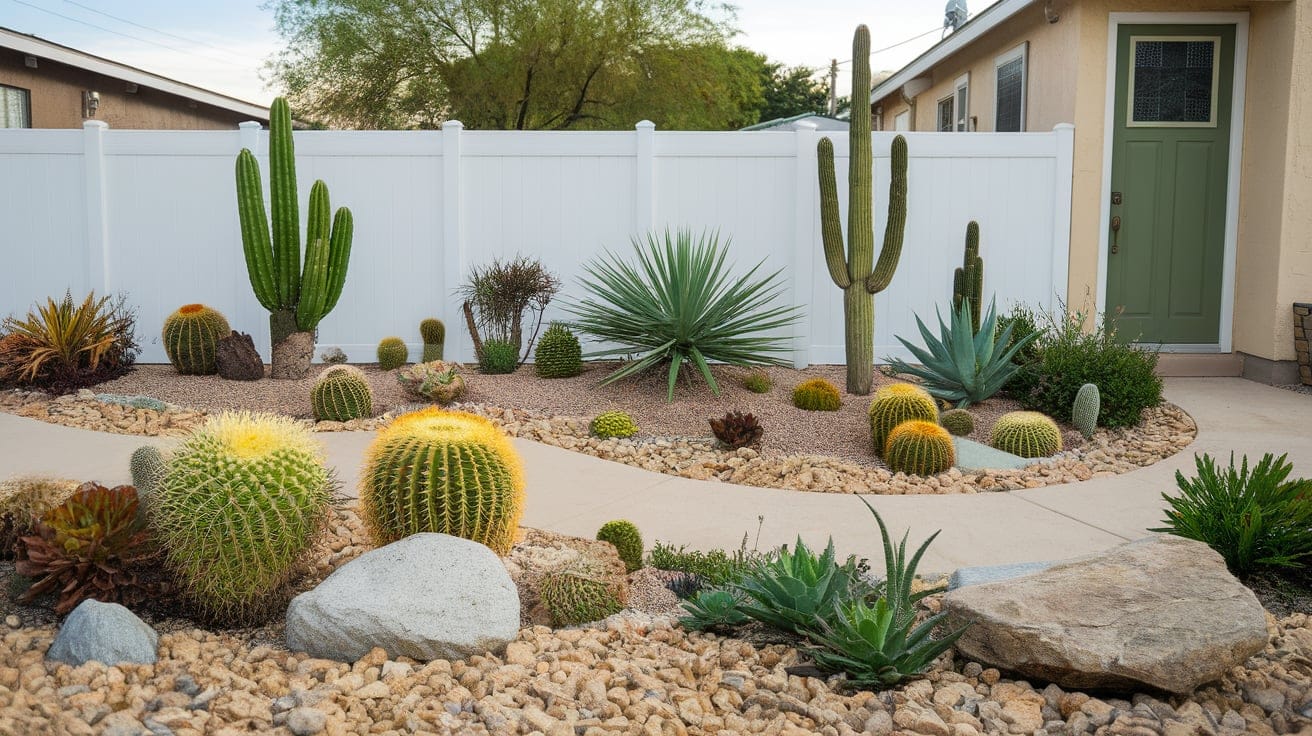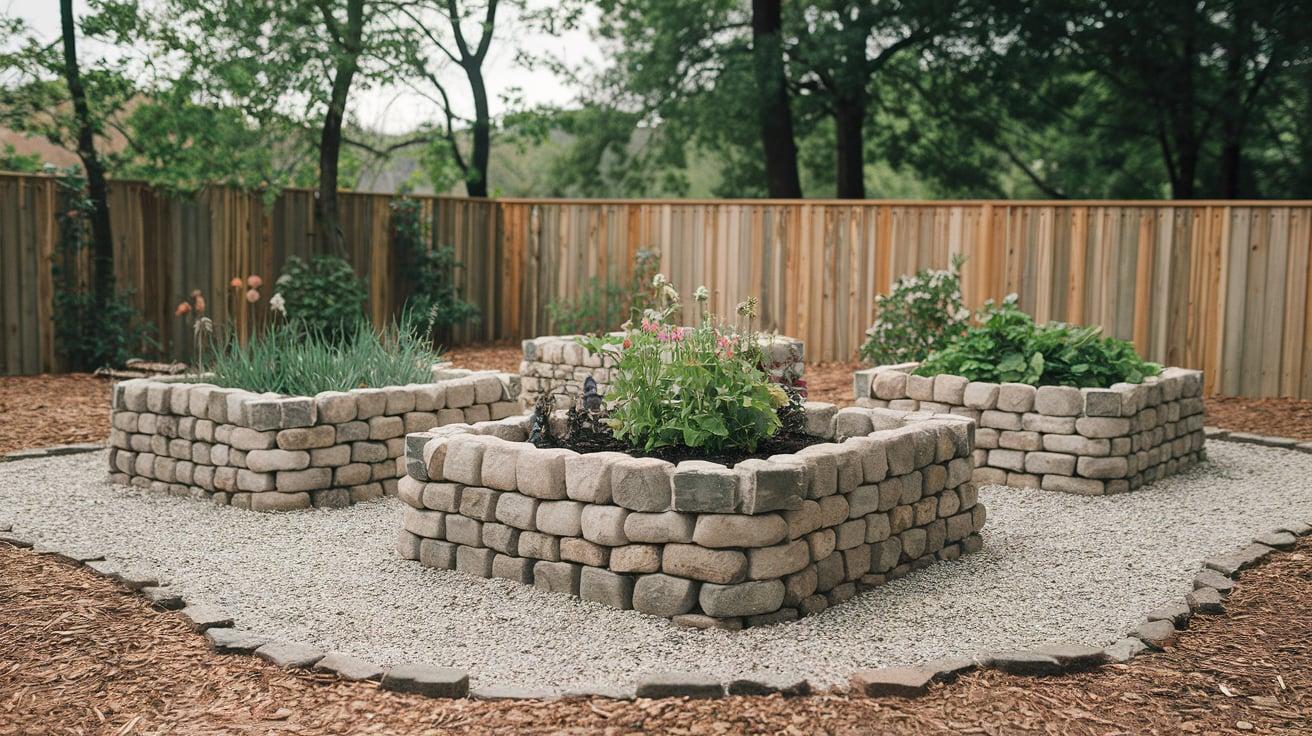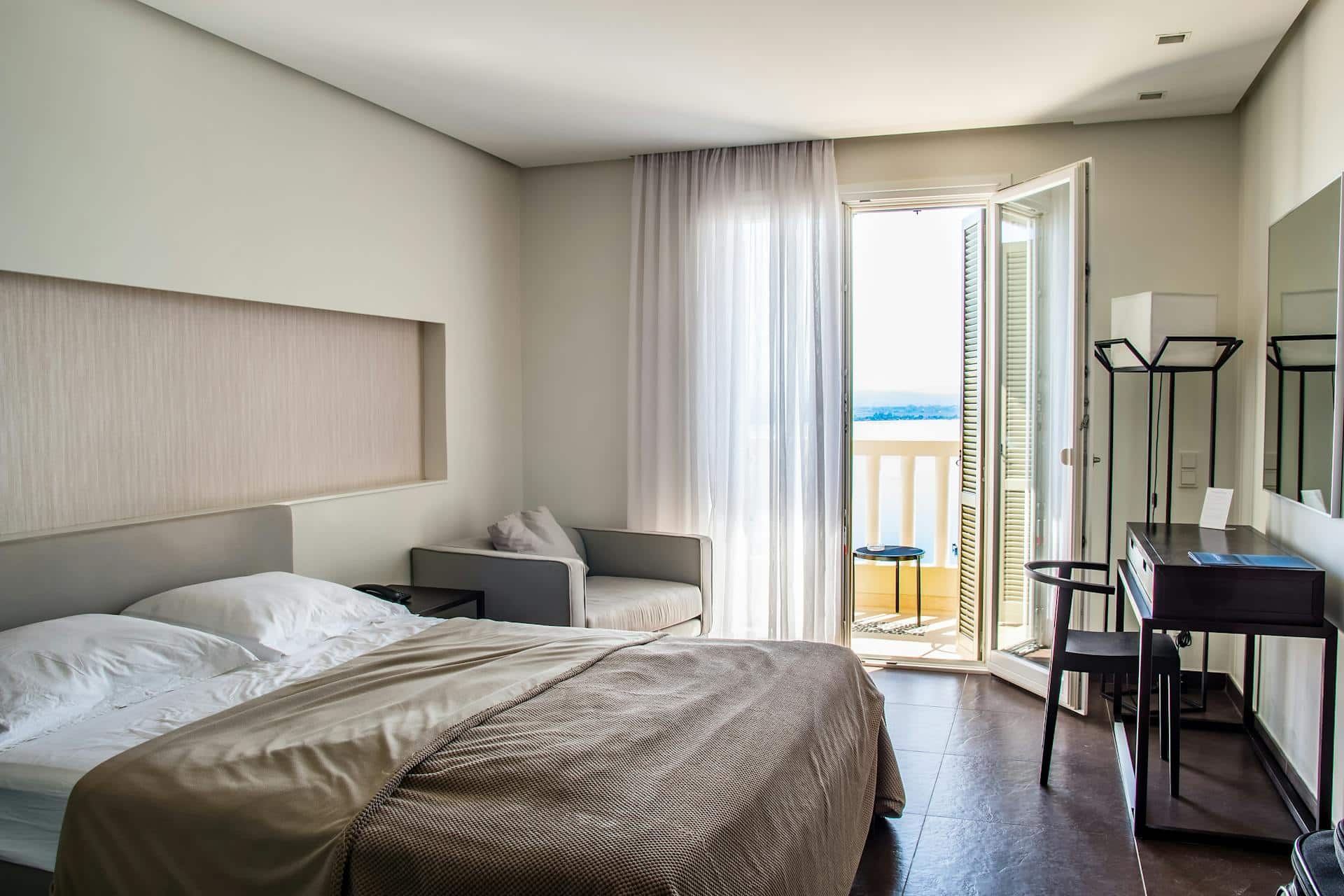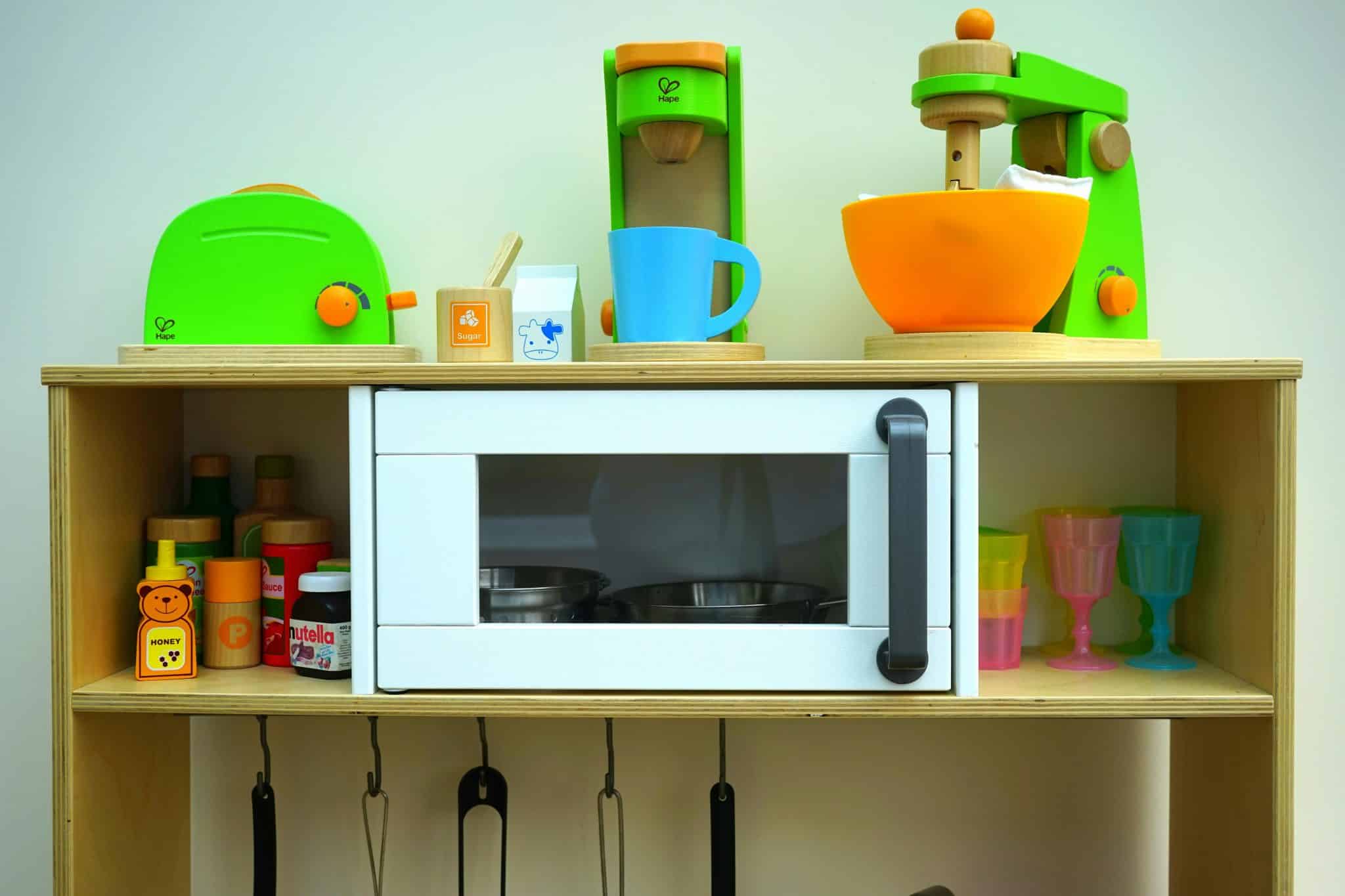Are you sick of spending your weekends mowing, watering, and maintaining that thirsty front yard?
I get it—regular grass yards can take time and money, making yard work feel like a full-time job.
That’s why I fell for xeriscaping, a smart way to work with nature instead of against it. I’ll show you 18 simple ways to make your front yard good-look look good and be ready for.
From picking the right plants to adding cool features that need zero water, these ideas will help you create a yard that makes the will makers look twice while saving you work hours.
Do you want to say goodbye to your lawn mower and hello to more free time? Let’s check out examinations.
What is Xeriscaping?
Xeriscaping brings together smart landscaping methods that cut down on water use. Instead of fighting against nature with constant watering and upkeep, this approach works with your local climate using plants that thrive on rainfall alone.
Think of it as creating a yard that takes care of itself.
Why Water Conservation Matters
A typical grass lawn drinks 30-60% of a home’s outdoor water use. But with xeriscaping, you can cut that number way down. Most xeriscape plants need very little water once settled in – just what nature provides.
For example, native grasses and wildflowers might only need watering during their first growing season, so they’re good to go.
18 Best Low-Maintenance Xeriscape Front Yard Ideas
1. Gravel and Stone Pathways
Clear paths through your yard do more than guide footsteps – they cut down on grass and slash your maintenance time. Crushed stone or pea gravel offers natural drainage while looking sharp year-round.
I like using local rocks to match the surroundings. A 3-inch layer works great; you’ll only need to rake it smooth occasionally.
2. Drought-Tolerant Perennials That Pop
For vibrant color without the hassle, these hardy plants thrive with minimal care. Blanket flower offers striking red and yellow blooms from spring through fall, adding warmth to any garden.
Salvia produces tall purple spikes that attract bees and bring lively movement to outdoor spaces. Yarrow features flat-topped flowers in rich sunset hues, creating a soft, textured look.
These resilient perennials return year after year and easily withstand dry conditions, making them perfect for effortless gardening.
3. Local Plants That Know Their Home
Native plants are naturally adapted to local conditions, making them easy to grow and maintain. Milkweed attracts butterflies while offering natural pest resistance, creating a lively and eco-friendly garden.
Penstemon features bright, tube-shaped flowers that hummingbirds love, adding color and movement to any landscape.
Black-eyed Susan produces cheerful yellow blooms that last for months, ensuring a long season of beauty with minimal effort.
These hardy plants flourish in their home environment, providing visual appeal and ecological benefits.
4. Smart Ground Covers
Ditch the traditional lawn and opt for these hardy ground covers that add beauty and function. Creeping thyme releases a pleasant fragrance when stepped on, making it a delightful choice for pathways and garden borders.
Stonecrop grows into a dense mat that naturally suppresses weeds, reducing the need for upkeep. Ice plants thrive in sunny spots, creating a vibrant living carpet with bright, succulent foliage.
These resilient spreaders offer an easy and attractive alternative to grass while requiring minimal maintenance.
5. Build a Garden That Brings Life
Add these pollinator-friendly plants to create a thriving habitat for bees and butterflies with minimal effort. Blue flax produces delicate, airy blooms that sway on thin stems, adding movement to your garden.
Butterfly bush serves as a nectar-rich buffet, drawing in various seasonal pollinators. Sedum offers long-lasting flowers that continue feeding bees well into fall.
For the best results, plant these in clusters, making it easier for pollinators to spot and enjoy their new favorite gathering place.
6. Rock Features That Make Sense
Well-placed rocks serve more than just a decorative purpose—they help structure your landscape while benefiting nearby plants. Large stones naturally define planting areas, creating clear boundaries without edging.
Rocks also absorb and retain heat, providing warmth that supports plant growth in cooler conditions. Unlike other materials, they stay in place and develop character over time, enhancing their natural appeal.
Position larger rocks first and fill gaps with smaller stones for the best results. Choosing locally sourced rocks ensures a cohesive look while keeping costs down.
7. Smart Watering Systems
A drip irrigation system can reduce water usage by up to 50%, making it a smart choice for the environment and your budget. Delivering water directly to the roots minimizes waste and ensures plants receive consistent moisture.
Timers automate the process, eliminating the guesswork and saving time.
Keeping leaves dry also helps prevent disease, leading to healthier plants with fewer issues. While there is an initial investment, the long-term savings on water bills and improved plant growth make it well worth the cost.
8. Make Mulch Your Friend
A 2-3 inch layer of mulch acts as a protective barrier, offering multiple benefits for your plants. It prevents weeds from taking over, retains moisture in the soil, and gives garden beds a neat, polished look.
Wood chips work best for flower beds and vegetable gardens, while gravel is ideal for cactus and drought-tolerant landscapes. Choosing the right mulch for your space can reduce maintenance while keeping your plants healthy and thriving.
9. Hard Features That Last
Incorporating solid elements into your yard design reduces plant upkeep while enhancing functionality. Paver patios require minimal maintenance beyond occasional sweeping, providing a long-lasting outdoor living space.
Small walls serve a dual purpose, offering structure and additional seating. Stone borders help contain mulch, maintaining a tidy and well-defined landscape.
These features minimize high-maintenance green space while keeping your yard visually appealing and inviting.
10. Tough Succulents That Stand Out
Succulents add bold texture and visual interest to any space while requiring little upkeep. Barrel cactus stands out with its striking, rounded form, making it a focal point in any arrangement.
Hens and chicks naturally spread, filling gaps and creating a lush, low-growing carpet. Snake plant adapts well to sun and shade, making it versatile for various conditions. For the best display, group them by height, placing taller varieties in the back to create depth and balance.
11. Spots to Sit and Relax
Design inviting areas that require no watering while enhancing your outdoor space. Small patios with potted plants add charm without the need for constant upkeep. Benches placed under shade trees create a cool, comfortable retreat for relaxing on warm days.
Gravel seating areas offer a flexible setup for portable chairs, making them perfect for gatherings.
The best part? These spaces reduce water-hungry grass while providing functional, beautiful spots to enjoy year-round.
12. Smart Rain Collection Spots
Maximize rainwater use by designing natural collection areas in your yard. Small dips or depressions help capture runoff, directing moisture where needed most.
Water-loving plants thrive in these low spots, reducing the need for extra irrigation. Strategically placed rocks slow down water flow, preventing erosion and allowing the soil to absorb more moisture.
With this setup, your garden stays hydrated longer, reducing watering needs during dry spells.
13. Trees That Draw The Eye
Choose hardy, drought-resistant trees that enhance your landscape while providing practical benefits. Mexican elder grows quickly and offers light, dappled shade, making it a great choice for warm climates.
Crape Myrtle stands out with its vibrant, long-lasting blooms that add seasonal color. Desert willow features a delicate canopy with pink flowers, bringing a touch of elegance without overwhelming nearby plants.
For maximum efficiency, plant these trees where they can provide shade in summer while allowing sunlight to warm your home in winter
14. Paths That Let Water Soak In
Choose permeable path materials that allow rain to soak into the ground rather than running off. Spaced flagstones with ground cover between them create a natural, visually appealing walkway while helping water absorb into the soil.
Loose gravel paths offer excellent drainage, preventing puddles and erosion.
Natural stone with intentional gaps allows for efficient water flow, reducing runoff and supporting nearby plants. Avoid solid concrete, as it directs water away instead of replenishing the soil.
15. Keep It Simple
A well-planned, minimalist design reduces upkeep while maintaining a polished look. Leaving open spaces between plants prevents overcrowding and allows each one to thrive.
Clear borders help define different areas, making the layout more structured and visually appealing. Sticking to a few plant varieties, arranged in groups of three or five, creates a cohesive and balanced design.
This thoughtful approach streamlines maintenance, keeping your outdoor space neat and effortless to care for.
16. Raised Areas That Work Smart
Elevating planting beds offers multiple benefits for both plants and gardeners. Raised areas allow better soil control, ensuring optimal conditions for growth.
They also make it easier to reach plants, reducing strain during maintenance. Built-in drainage helps prevent water buildup, keeping roots healthy.
Using blocks or natural stones lets you customize the design to match your landscape style, adding structure and visual interest.
17. Useful Herbs That Do Double Duty
Grow herbs that enhance your garden while serving practical purposes. Rosemary creates a fragrant, evergreen border that adds structure and charm.
Sage stands out with its silvery foliage, bringing texture and contrast to planting areas.
Oregano naturally spills over walls and fills empty spaces, softening edges with its lush growth. As a bonus, these herbs provide fresh ingredients for cooking, while regular trimming helps keep them healthy and vibrant.
18. Smart Lighting That Makes Sense
Choose lighting that enhances both safety and ambiance with minimal effort. Solar path markers absorb sunlight during the day and illuminate walkways at night without adding to your energy bill.
Low-voltage spotlights highlight key plants and landscape features, creating depth and visual interest. Motion sensor lights near steps and walkways provide added security and convenience, ensuring well-lit paths only when needed.
This smart approach keeps your outdoor space functional and inviting after dark.
Conclusion
Switching to a low-maintenance xeriscape yard isn’t just about saving water—it’s about getting your life back. You can create an outdoor space that practically runs itself by picking the right mix of smart features and tough plants.
Remember, you don’t have to change everything at once. Start with one idea that fits your yard and budget.
For example, you could add some gravel paths this spring or swap out a patch of grass for native plants that pollinators love.
Each small change reduces yard work and water bills, making your space more interesting.
The best yard works for you, not the other way around. Ready to spend less time mowing and more time enjoying?
Pick your favorite idea and get started.


























